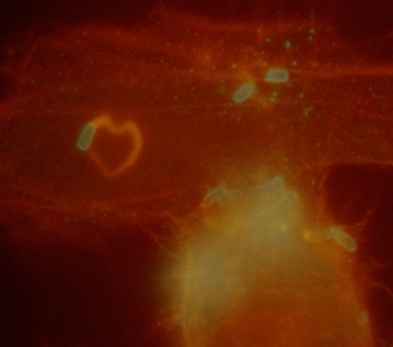Vitamin-D mediates antimicrobial response
If you are but moderately involved in research in innate immunity and Toll like receptors, the Science paper by Philip T. Liu et al, led by Robert Modlin entitled Toll-Like Receptor Triggering of a Vitamin D-Mediated Human Antimicrobial Response will cross your path soon - in a journal club or on a coffee table conversation.
If your are just interested but have not been exposed to the questions of molecular biology in innate immunity, the publication is noteworthy as it reviews (and probably adds to) the challenges and controversies in the field of Toll like receptors (TLR) mediated signalling. TLRs are a *hot* class of molecules involved in recognition of pathogenic stimuli but are poorly understood given the amount of research they have been attracting.
The researchers focus on the known differences in the susceptibility of population groups to infections of Mycobacterium tuberculosis and on a particular group of TLR, the TLR 1 and 2 heterodimer. Tuberculosis was previously described to be influenced - amongst many other factors - by UV exposure which is involved in the production of vitamin D. The levels of skin melanin and consequently skin color limit the levels of UV light that reach lower regions of the skin where the vitamin is produced.
The hypothesis that vitamin D plays a role in the mediation of TLR signaling in the infection with Mycobacterium tuberculosis is experimentally augmented by showing that one of the key molecules, VDR is expressed upon stimulation with TLR-ligands in human monocytes. The differences in TLR between a caucasian and an afro-american group could be removed by adding the compound 25D3, a precursor to vitamin D, which suggests that it is directly involved in the signaling, not providing an overall benefit - the key finding of the study.
Finally, the authors argue that the some of differences in antimicrobial pathways of mice and humans might be explained by the nocturnal life style of the rodents, which relay TLR signals via nitric oxide instead of vitamin D.
Somehow, this sounds like it would be a good idea to spend some time in the sun to fight prevent infections. The work will be discussed in our lab for sure - if I learn some new insights from our experts, I'll comments it here.
[Links of interest to the article in The Scientist]
If your are just interested but have not been exposed to the questions of molecular biology in innate immunity, the publication is noteworthy as it reviews (and probably adds to) the challenges and controversies in the field of Toll like receptors (TLR) mediated signalling. TLRs are a *hot* class of molecules involved in recognition of pathogenic stimuli but are poorly understood given the amount of research they have been attracting.
The researchers focus on the known differences in the susceptibility of population groups to infections of Mycobacterium tuberculosis and on a particular group of TLR, the TLR 1 and 2 heterodimer. Tuberculosis was previously described to be influenced - amongst many other factors - by UV exposure which is involved in the production of vitamin D. The levels of skin melanin and consequently skin color limit the levels of UV light that reach lower regions of the skin where the vitamin is produced.
The hypothesis that vitamin D plays a role in the mediation of TLR signaling in the infection with Mycobacterium tuberculosis is experimentally augmented by showing that one of the key molecules, VDR is expressed upon stimulation with TLR-ligands in human monocytes. The differences in TLR between a caucasian and an afro-american group could be removed by adding the compound 25D3, a precursor to vitamin D, which suggests that it is directly involved in the signaling, not providing an overall benefit - the key finding of the study.
Finally, the authors argue that the some of differences in antimicrobial pathways of mice and humans might be explained by the nocturnal life style of the rodents, which relay TLR signals via nitric oxide instead of vitamin D.
Somehow, this sounds like it would be a good idea to spend some time in the sun to fight prevent infections. The work will be discussed in our lab for sure - if I learn some new insights from our experts, I'll comments it here.
[Links of interest to the article in The Scientist]
spitshine - 2006-02-27 21:08

